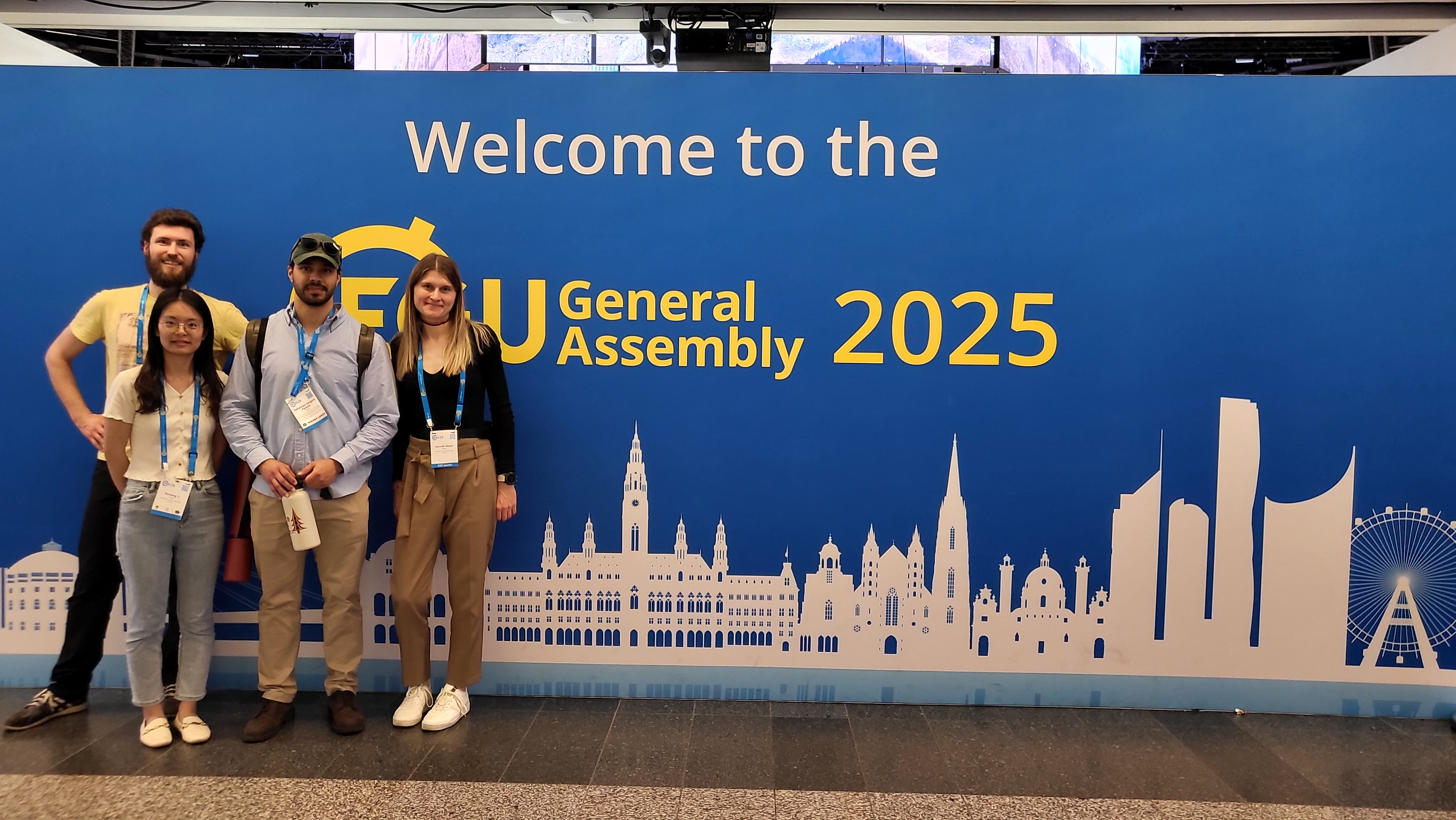Dusty EGU25 General Assembly

The Helmholtz Young Investigator Group "Mineral Dust" participated in the European Geosciences Union General Assembly 2025 (EGU25), held in Vienna, Austria, from April 27 to May 2, and was involved in eight contributions, showcasing our research activities.
Rumeng Li presented what is, to our knowledge, the first comprehensive global-scale analysis of haboobs (dust storms generated by the cold pool outflow from moist convection) [1]. For this study, physics-based dust emission schemes were implemented in ICON-HAM-lite, a novel Earth system model developed within the nextGEMS project, and storm-resolving global simulations at a spatial resolution of 5 km were conducted. From these simulations, haboobs were identified and characterized using a newly developed tracking algorithm.
Hannah Meyer and Andreas Baer presented their research during the session “Aeolian Dust: Initiator, Player, and Recorder of Environmental Change, co-convened by Martina Klose. Andreas presented results on the contribution of haboob dust storms on the dust direct radiative effect (DRE) based on annual simulations with the ICON-ART model for North Africa and the Arabian Peninsula, key regions for dust emissions and haboob activity [2]. The simulations employed a multiple-call radiation scheme in ICON-ART to quantify the dust direct radiative effect (DRE). Hannah showed results obtained from our J-WADI campaign. In her work she was able, for the first time, to characterize the dust size distribution directly at the emission source covering diameters between 0.4 and 200 µm at a high temporal resolution [3]. Last year at EGU24, Hannah received the Outstanding Student and PhD candidate Presentation (OSPP) Award.
Later that afternoon, Sebastian Vergara Palacio shared the latest results from his study on how ice nucleation activity varies with particle size and mineralogy for dust from mid-latitude (Morocco) and high-latitude (Iceland) sources [4]. His study combines experimental from the AIDA cloud chamber testing dust samples with particle size distributions extending up to ~50 µm with ICON-ART model experiments.
Four more presentations were given by our collaborators at the Technical University Darmstadt on characterizing the dust particle size distribution and elemental composition with electron microscopy and X-ray fluorescence [5], and on the performance of low-cost sensors for aerosol measurements [6]; the Freie Universität Berlin on dust emissions in Iceland [7]; and the University of Leeds on using machine learning for the image-based nowcasting of desert dust [8].
We were very happy to present our results at EGU25 together with our collaborators, discuss with colleagues, and we are looking forward to more exchange in the future.
[1] https://meetingorganizer.copernicus.org/EGU25/EGU25-11001.html
[2] https://meetingorganizer.copernicus.org/EGU25/EGU25-6741.html
[3] https://meetingorganizer.copernicus.org/EGU25/EGU25-12087.html
[4] https://meetingorganizer.copernicus.org/EGU25/EGU25-16438.html
[5] https://meetingorganizer.copernicus.org/EGU25/EGU25-13198.html
[6] https://meetingorganizer.copernicus.org/EGU25/EGU25-19762.html
[7] https://meetingorganizer.copernicus.org/EGU25/EGU25-10547.html
[8] https://meetingorganizer.copernicus.org/EGU25/EGU25-13224.html
